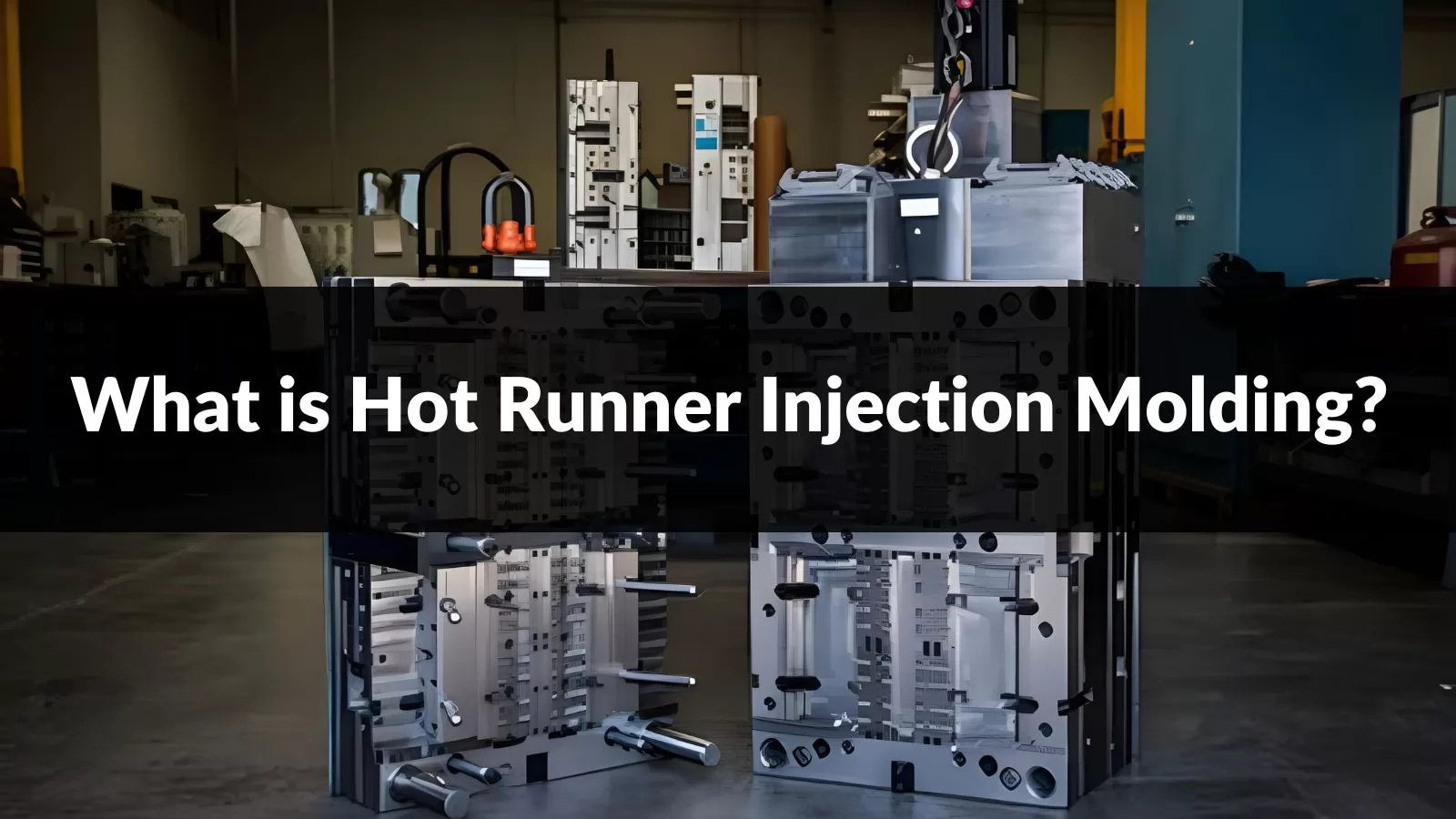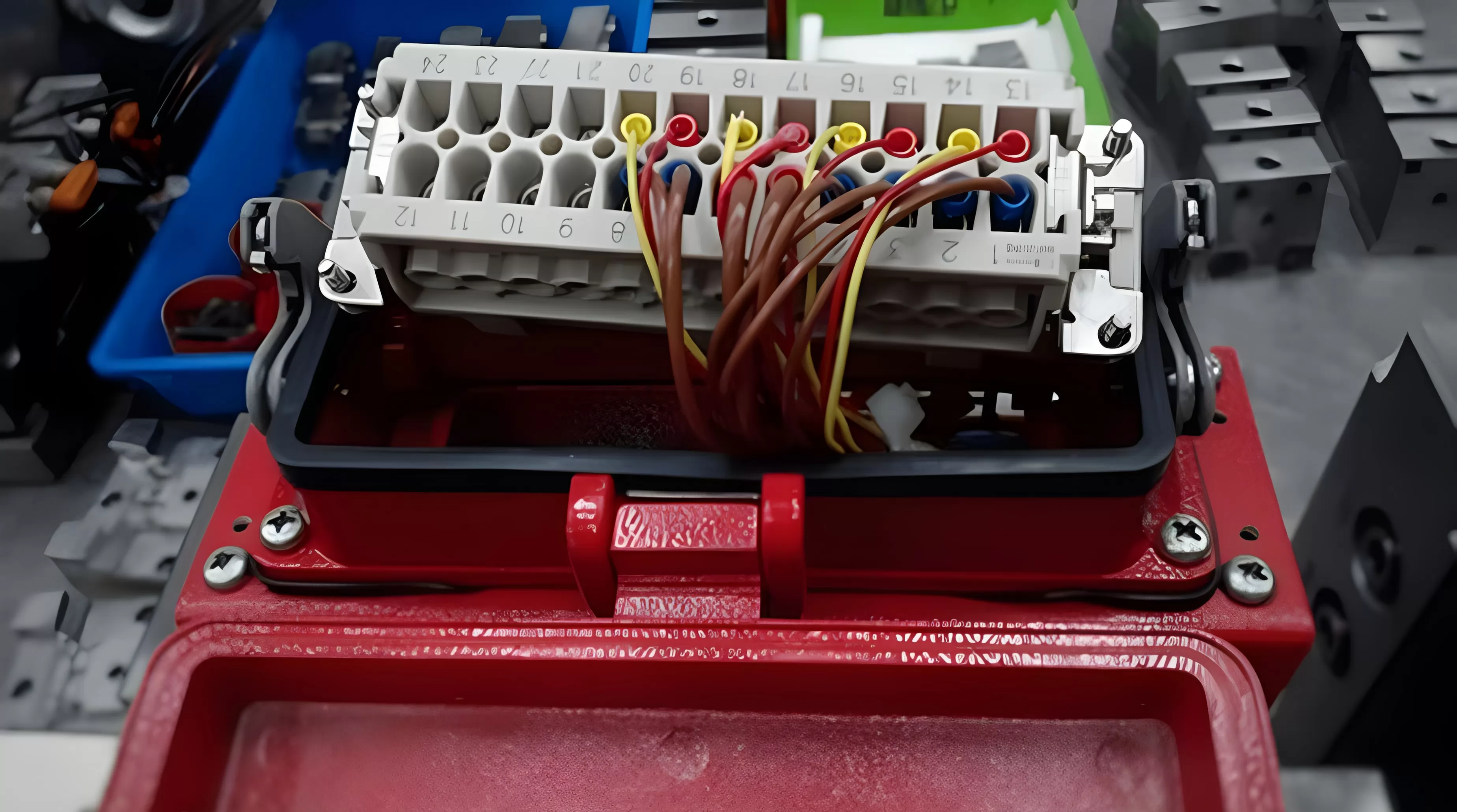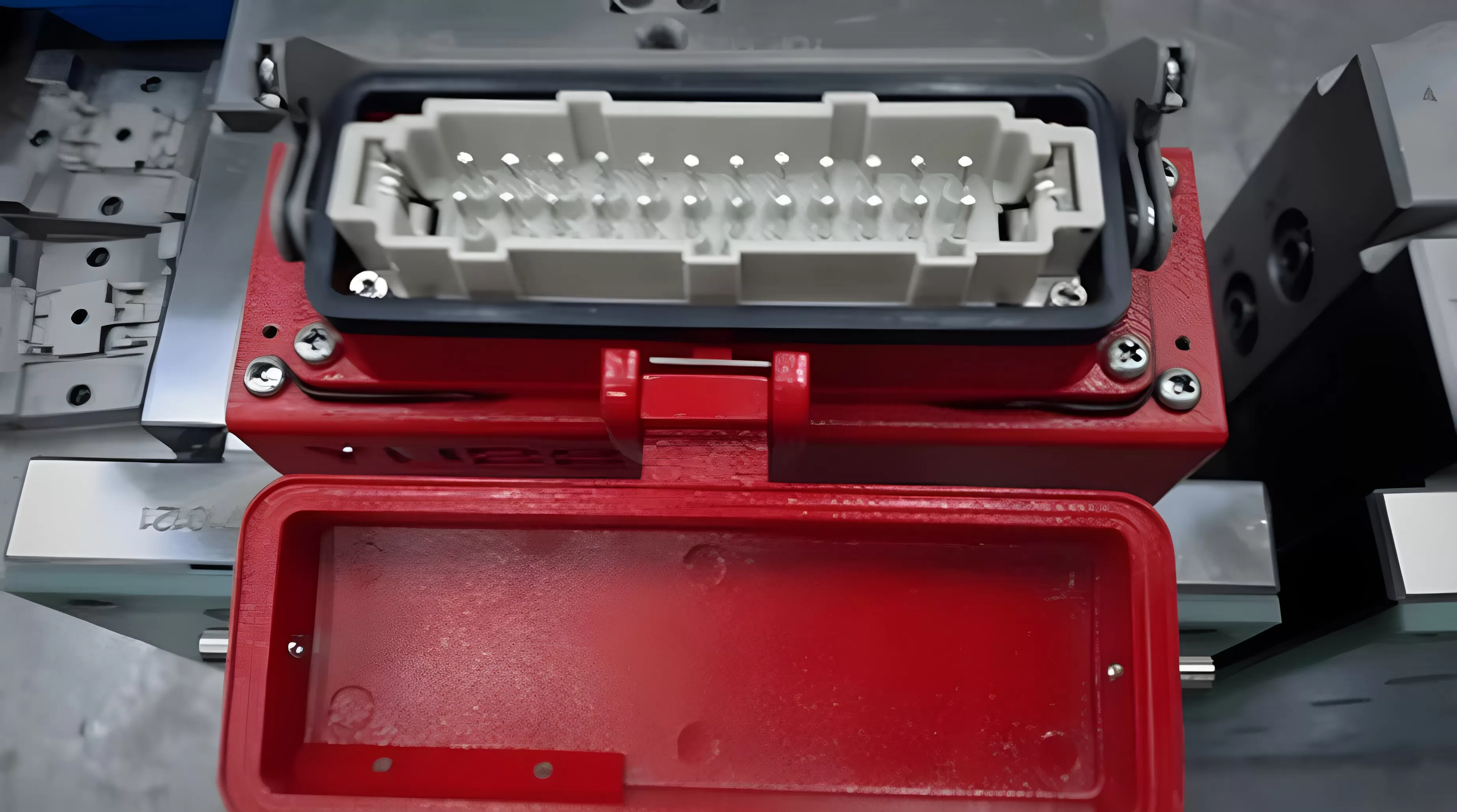
Hot runner injection molding is a method used in the plastics industry to more efficiently fill molds with molten material. This advanced technique involves heating the channel through which the plastic passes, keeping it in a fluid state to enable consistent flow and minimize waste.
If you’ve ever wondered about maximizing productivity while minimizing material loss in plastic manufacturing, hot runner systems might be the critical solution you’re seeking. Discover how this innovative technology can streamline production processes and help maintain quality across countless product cycles.
What is Hot Runner
A Hot Runner is an advanced assembly within a mold system used in plastic injection molding that serves to maintain a molten flow of plastic from the injection molding machine into the cavities of the mold. Unlike traditional cold runner systems, where cooled and solidified channels of plastic (runners) need to be separated from the final product, hot runners keep the plastic at a consistent temperature by using heated components. This design eliminates material wastage due to runner disposal and contributes to the efficiency and speed of the manufacturing process. The system consists of various elements such as locating rings, inlets, manifolds, nozzles, and heater technology which collaborate closely to ensure smooth operation and delivery of quality molded parts.
How Does a Hot Runner Injection Molding System Work?
When the injection molding process starts, the raw plastic material is fed into the machine through the inlet. This material is then directed to a heated barrel where it is melted. Once sufficiently liquefied, the molten plastic flows from the barrel into the manifold.
The manifold acts as a distribution hub from which this molten plastic is delivered evenly to each individual mold cavity through one or more nozzles. A crucial feature of these nozzles is their precise temperature control, enabled by heater technology that ensures consistent heat throughout the process so that plastic remains fluid until it reaches mold cavities.
While in operation, every part of this system must maintain consistent temperatures to avoid premature cooling and solidifying of the thermoplastic before it fills the molds completely—an aspect critical for quality and efficiency in production.
In summary, a hot runner system facilitates seamless throughput by heating and maintaining molten plastic at optimal temperatures during its passage from an injection unit into multiple mold cavities without any significant thermal loss. It eliminates waste and enhances cycle times by keeping plastic fluid, enabling faster processing and higher-quality molded products.
Elements of Hot Runner
The hot runner system is a crucial component in injection molding, designed to convey molten plastic from the machine’s nozzle into the cavities of the mold. The system consists of several key elements:
| Element | Function | Importance |
|---|---|---|
| Locating Ring | Aligns hot runner mold with injection machine nozzle | Ensures correct position for injection |
| Inlet | Entry point for molten plastic into hot runner system | Channels material under pressure and high temperature |
| Manifold | Distributes molten plastic throughout mold | Provides uniform flow to all cavities |
| Nozzles | Direct outflow from manifold into each cavity | Critical for controlled filling of each mold |
| Heater Technology | Maintains optimal temperature within manifold and nozzles | Prevents premature cooling; maintains melt conditions |
Locating Ring
The locating ring is a crucial component in the hot runner injection molding system, serving as the primary alignment feature between the mold and the injection molding machine. The role of this component is to ensure that the hot runner manifold’s inlet is correctly aligned with the machine’s nozzle. Precision in this alignment is vital, because even minor misalignment can result in plastic leakage or suboptimal filling patterns, potentially compromising product quality.
Manufactured from robust materials to withstand repeated contact with mechanical elements and thermal stress, these rings are designed for durability. They come in various sizes to match different mold specifications and injection machines. The locating ring precisely fits into a corresponding recess on the platen of the injection molding machine, making it straightforward for technicians to install or remove molds as needed during production runs or maintenance.
By facilitating proper alignment, locating rings help minimize downtime due to misalignments and assist in achieving consistent part quality throughout the manufacturing process.
Inlet
The inlet in a hot runner system is a critical component that serves as the entry point for the molten plastic material. It is typically connected to the molding machine’s injection barrel, through which the molten plastic is injected into the hot runner system under controlled pressure. The design of the inlet must ensure smooth flow and transition of the plastic into the manifold without causing any premature cooling that might lead to defects in the final product.
Manifold
In hot runner injection molding, the manifold acts as a crucial component responsible for channeling molten plastic from the injection molding machine’s nozzle to the individual nozzles that fill the mold cavities. The design of the manifold is sophisticated, yet instrumental in ensuring a balanced flow of plastic, which helps maintain consistent quality across all parts being produced.
The structure of the manifold is typically made of robust and heat-resistant metals designed to withstand the high temperatures required for melting and maintaining plastic in a fluid state. It often resembles a series of channels or passages, carefully constructed to minimize pressure drop and ensure a homogenous temperature throughout its length.
An essential function of the manifold includes precise thermal regulation. This not only prevents premature cooling of the polymer but also avoids degradation due to overheating. The balanced distribution of heat is largely thanks to strategically placed heaters within or around the manifold body, which work together with temperature control systems to maintain ideal operational conditions.
By distributing the molten plastic evenly and managing its temperature effectively, manifolds are fundamental in optimizing the flow path from machine to mold. This efficiency allows for faster cycle times and reduced waste.
Nozzles
Nozzles in a hot runner injection molding system serve the critical function of connecting the manifold to the mold cavity. They are precisely engineered components responsible for accurately directing the flow of molten plastic into the cavities of a mold. The design varies significantly depending on the type, viscosity, and other properties of the material being used as well as the specific application requirements.
A critical aspect to nozzle performance is thermal control. Maintaining an even temperature profile along the entire length of the nozzle ensures that the material flows consistently, avoiding premature cooling or degradation which could lead to defects in the final product. This uniformity in temperature also helps in maintaining dimensional stability and part quality.
The nozzles can be categorized based on their method of gating, namely valve gated or thermally gated. Valve-gated nozzles use a mechanical mechanism to open and close the gate at precise timing during injection, which can improve control over material flow and reduce marks on parts. Thermally gated nozzles rely on adjusted heat levels to control when and how much material is injected into molds.
For optimal efficiency, many nozzles incorporate tip insulators that minimize heat transfer from the nozzle to the mold components, leading to more energy-efficient operation with less risk for issues such as freeze-off or leakage at the gate location.
Heater Technology
Within a hot runner injection molding system, heater technology is a critical component tasked with maintaining the precise temperature control required for the plastic resin as it flows through the manifold and nozzles. Accurate temperature regulation ensures that the material remains in the ideal molten state for processing, preventing premature cooling which can lead to defects in the molded parts.
Heater technology often utilizes resistance heaters, which convert electrical energy into heat through resistive components like cartridge heaters or coil heaters. These heating elements are strategically placed within various parts of the hot runner system to ensure uniform heat distribution. Advanced heater systems also employ thermocouples and sensors, continuously monitoring temperatures and providing feedback to controllers that make real-time adjustments.
The controller’s power output modulates based on the feedback from these sensors to maintain a stable temperature throughout the cycle.
Hot Runner Advantages
Hot runner injection molding systems offer a range of advantages notable in the realms of efficiency, part quality, and environmental impact.
Efficiency is markedly improved as the hot runner enables continuous production without the interruption to remove and recycle runners, leading to significant savings in material usage and associated costs. This translates into a substantial reduction in raw plastic consumption, as there is no generation of runner waste.
Another substantial advantage lies in cycle time reduction. Since the molten plastic is maintained at an optimal temperature within the hot runner system, the injection molding process can proceed at a faster rate compared to cold runner systems, which require cooling and reheating phases.
Part quality is also enhanced by implementing hot runners; uniform temperature control throughout the molding process minimizes material stress and potential warpage or shrinkage issues. Improved flow allows for better cavity filling, which results in parts with consistent weights and dimensions as well as superior surface finishes.
From an environmental perspective, hot runner systems are more sustainable owing to the elimination of waste typically created by cold runners. As scrap is reduced significantly or eliminated altogether, this promotes a greener manufacturing process.
Overall productivity sees an increase with hot runner systems due to less manual labor required for finished parts separation and reduced downtime between cycles. Moreover, they support design flexibility allowing for more complex part designs that might be impractical with traditional cold runner molds.
| Advantages | Description |
|---|---|
| Material and Cost Efficiency | Saves on material usage since there’s no creation of runners; leads to cost savings from reduced raw material consumption. |
| Reduced Cycle Time | Streamlines production by maintaining consistent temperatures; greatly reduces pauses between cycles typical with cold runners. |
| Enhanced Part Quality | Offers tight temperature control for minimized warping or shrinkage; ensures better consistency in weight and dimension of parts. |
| Environmental Sustainability | Decreases plastic waste by eliminating runners; reflects a commitment to greener manufacturing processes. |
| Increased Productivity | Minimizes need for manual post-molding work; accommodates complex designs enhancing overall production output. |
Types of Hot Runner Systems
Hot runner systems come in various configurations, each designed to meet the specific needs of the injection molding process they are involved with. The two principal types of hot runner systems are externally heated and internally heated systems.
Externally heated hot runner systems are designed so that the molten plastic does not come into contact with the heaters. This design is beneficial for materials that are sensitive to heat or prone to degradation. In these systems, the melt channels are uniformly heated, which helps to maintain a consistent temperature and prevent premature solidification.
Conversely, internally heated hot runner systems feature heaters located inside the melt channel. This configuration ensures direct heat is applied to the plastic, promoting better flow control and precise temperature management. While this can be advantageous for controlling the processing conditions of certain polymers, it may not be suitable for materials that degrade when exposed to prolonged high temperatures as charred material can block the channels.
Aside from these two main categories, hot runners can also be distinguished based on their gating methods; valve gate or thermal gate designs. Valve gated systems employ mechanical shut-off pins which allow for precise control over the injection process and can reduce gate vestiges on finished parts. These are ideal for large parts or applications requiring aesthetic finishes.
Thermal gated systems do not rely on moving parts but use controlled temperature variations to act as gates that open when plastic needs to be injected and close once sufficient material has been delivered. Thermal gates tend to be simpler and more cost-effective but might result in larger gate marks than valve gated systems.
| Type | Heating Method | Ideal Use Case |
|---|---|---|
| Externally Heated | Heat does not directly contact melt channels | Sensitive materials prone to heat degradation |
| Internally Heated | Direct heating inside of melt channels | Demanding flow control and precise temp management |
| Valve Gated | Mechanical pins control gate opening | Large parts with aesthetic finishing concerns |
| Thermal Gated | Temperature variation acts as gate | Simpler applications where gate marks are less concerned |
What Is Cold Runner
A Cold Runner system in injection molding is a configuration where molten plastic material is supplied to the mold cavities through channels (runners) that are not heated. These runners cool simultaneously with the part, solidifying during the molding process. Once opened, the mold ejects both the finished parts and the cold runner which has hardened. The cold runner material results in scrap, which may be reprocessed and regrind for reuse depending on the type of thermoplastic.
The design of a cold runner system includes various channels carved into the plates of the mold; typically it consists of a main runner that distributes plastic from the injection unit to sub-runners or gates that deliver it into each cavity. The simplicity of this method makes it suitable for molds with fewer cavities and straightforward design demands.
In comparison to hot runners, cold runners do not have heating elements, making their operation less complex and often less expensive upfront. However, ongoing costs can include labor for removing and disposing or recycling of waste material generated by the runners.
Hot Runner Molds vs Cold Runner Molds
In hot runner molds, a heated delivery system is utilized, which keeps the plastic in a molten state as it flows from the injection machine nozzle to the various cavity entrances. The system includes heated components such as nozzles and manifolds that precisely control the flow of the plastic.
In contrast, cold runner molds utilize a delivery system where the channels for the molten plastic are not heated. This means that each time an injection cycle occurs, these runners cool and solidify along with the part being created. After ejection, these solidified runners need to be removed from the molded parts.
There’s a clear distinction between these two systems when it comes to operational efficiency and waste generation. Hot runner systems eliminate runners’ waste since plastic is kept molten throughout the process; therefore, only the finished part is produced without any attached sprue or runners that require disposal or recycling. This can result in a significant reduction in material costs and shortening of cycle times since there’s no need to cool down and reheat runners.
On other hand, cold runner systems typically create more waste due to these additional runners being solidified with each part produced, requiring additional steps for their removal and recycling where possible. However, one advantage of cold runner systems is they can be simpler and less costly to manufacture and maintain compared to hot runners.
Selecting between hot runner mold technology or cold runner mold technology often depends on factors such as production volume, material type, part complexity, upfront tooling investment, maintenance capabilities, and environmental considerations linked to material wastage.
| Aspect | Hot Runner Molds | Cold Runner Molds |
|---|---|---|
| Runner System | Heated | Not Heated |
| Material Waste | Reduced (no solidified runners) | Increased (solidified runners produced) |
| Cycle Time | Shorter (no cooling time for runners) | Longer (includes cooling time for runners) |
| Part Quality | Higher consistency | Possible quality variability |
| Cost | Higher initial cost | Lower initial cost |
| Maintenance | More complex due to heating elements | Simpler mechanical system |
| Ideal Use Cases | High volume production & complex parts | Low-volume production & simpler parts |
| Environmental Impact | Reduction of waste | Significant presence of waste for recycling |
In conclusion
In conclusion, hot runner injection molding is a sophisticated manufacturing process that enhances the efficiency and quality of plastic part production by eliminating material waste and reducing cycle times.
To understand how hot runner systems can optimize your production capabilities and save on costs, consider reaching out for an expert consultation. Discover the benefits tailored to your specific manufacturing needs by exploring our range of hot runner solutions today.




